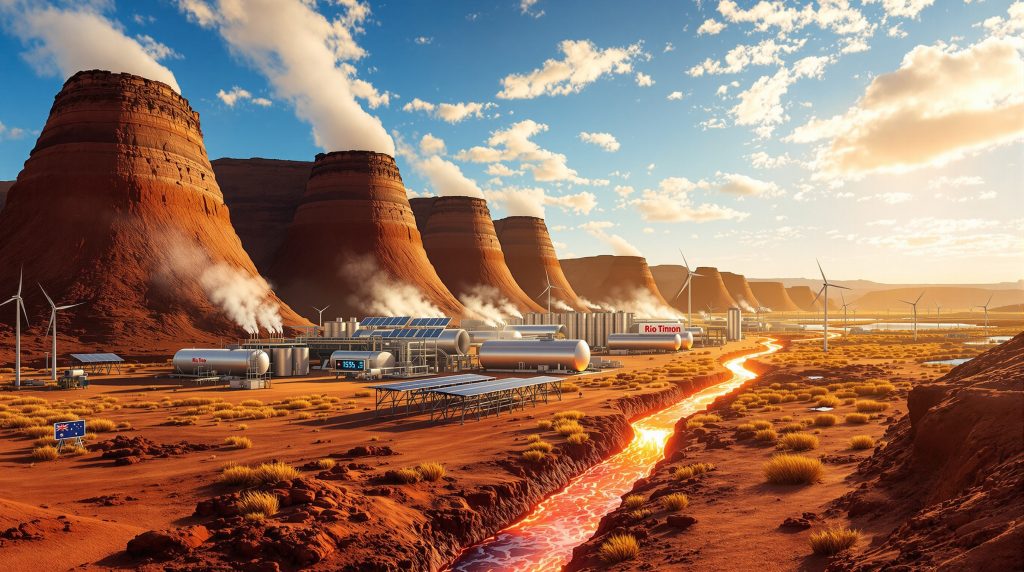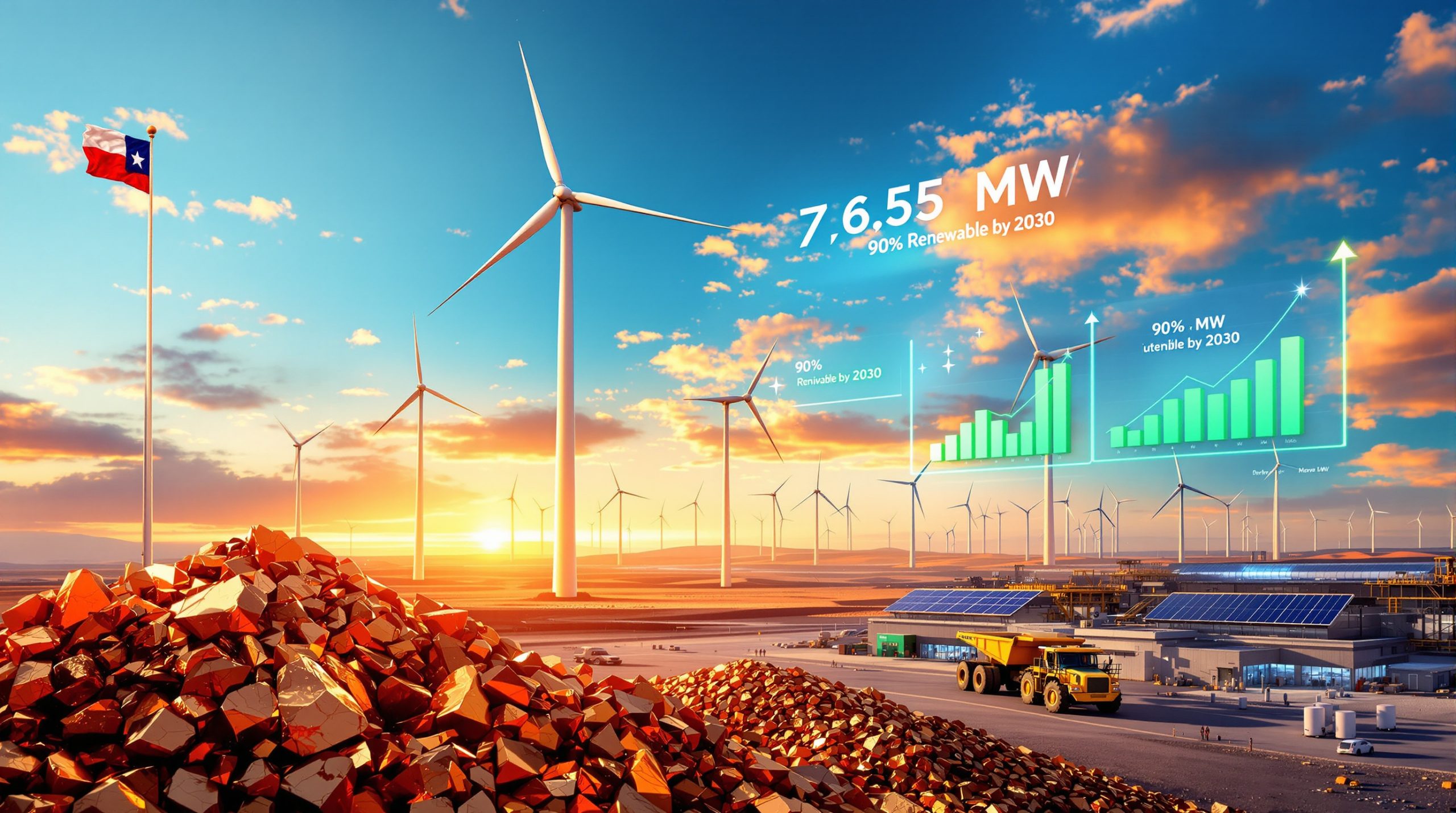Understanding Rio Tinto's Green Steelmaking Challenge
Rio Tinto confronts an enormous decarbonisation challenge as the mining giant works toward ambitious emissions reduction targets. The company's iron ore operations feed steel production processes that generate massive carbon footprints across global supply chains. This reality has pushed Rio Tinto green steelmaking initiatives to explore multiple technological pathways for sustainable steel production, recognising that traditional blast furnace methods produce over 1.8 tonnes of carbon dioxide per tonne of iron.
The urgency of this transformation reflects both regulatory pressures and market demands for cleaner steel products. Furthermore, mining companies increasingly face scrutiny over their downstream emissions impact, particularly as governments worldwide implement stricter carbon accounting requirements and carbon border adjustments.
The Rise and Fall of BioIron Technology
What Made BioIron Revolutionary?
BioIron represented Rio Tinto's most ambitious green steelmaking venture, promising to revolutionise iron production through an innovative combination of renewable biomass and microwave technology. The process aimed to convert Pilbara iron ore using agricultural waste materials including wheat straw, barley, and other biomass feedstocks.
The technology's environmental credentials appeared remarkable:
- 95% reduction in carbon emissions compared to conventional blast furnaces
- Zero reliance on metallurgical coal traditionally required for steel production
- Utilisation of renewable agricultural waste that would otherwise decompose
Rio Tinto's investment commitment demonstrated substantial confidence in the approach. The company allocated $215 million over more than a decade of development, establishing a dedicated research facility in Rockingham, south of Perth, to advance the technology toward commercial viability.
Critical Factors Behind the Abandonment
Despite the substantial financial commitment and promising initial results, Rio Tinto ultimately shelved the BioIron project in November 2025. However, Rio Tinto Iron Ore Chief Executive Matthew Holcz acknowledged that furnace designs required additional development to minimise operational risks and optimise performance.
Technical Scaling Challenges:
Dr. Tejas Bhatelia from Curtin University, an associate professor in minerals, energy, and chemical engineering, identified fundamental scaling difficulties that BioIron encountered. The technology proved more complex to scale up than initially anticipated, with microwave energy application presenting unique engineering challenges at industrial volumes.
Biomass Supply Chain Obstacles:
The logistics of sourcing adequate biomass presented significant operational barriers. Dr. Bhatelia explained that geographic constraints could force companies to spend considerable energy transporting agricultural waste to processing facilities, potentially undermining the technology's environmental benefits.
Unlike hydrogen-based approaches that leave no carbon to sequester, biomass reduction processes require consistent access to renewable feedstock materials. This dependency creates supply chain vulnerabilities, particularly for mining operations in remote locations like the Pilbara.
Performance Optimisation Gaps:
The furnace technology required additional engineering development to achieve reliable industrial-scale operation. These technical hurdles, combined with logistical constraints, created compounding challenges that ultimately led Rio Tinto to redirect its Rio Tinto green steelmaking investments.
Zesty Technology Partnership: A Strategic Pivot
Understanding the Zesty Approach
Rio Tinto's partnership with Australian technology company Calix represents a fundamental shift toward hydrogen-based green steel production. In addition, the Zero Emissions Steel Technology (Zesty) utilises electric heating combined with hydrogen reduction to produce metallic iron without carbon emissions.
Phil Hodgson, Calix Chief Executive, describes the process mechanics: the method involves heating a large steel tube containing dust-like iron ore, then introducing hydrogen gas to create a chemical reaction that produces iron at one end and water vapour at the other.
Investment Structure:
| Funding Source | Amount | Purpose |
|---|---|---|
| Rio Tinto Investment | $35+ million | Technology partnership and facility development |
| ARENA Grant Funding | $45 million | Government support for renewable energy technology |
| Total Project Investment | $80+ million | Demonstration plant construction and operation |
Technical Advantages Over BioIron
The Zesty technology offers several strategic benefits that addressed BioIron's limitations:
Supply Chain Independence:
- No biomass dependency: Eliminates agricultural waste sourcing challenges
- Location flexibility: Compatible with various geographic settings
- Scalable infrastructure: Works with existing renewable energy systems
Process Reliability:
- Electric heating system: More predictable than microwave energy application
- Hydrogen reduction: Well-understood chemical process with proven industrial applications
- Water vapour byproduct: Eliminates carbon sequestration complexities
The demonstration facility aims to produce 30,000 tonnes of iron annually, serving as proof-of-concept for larger commercial operations. Consequently, Rio Tinto will supply up to 10,000 tonnes of iron ore to support the testing phase, ensuring adequate feedstock for performance validation.
Current Limitations and Future Potential
Phil Hodgson acknowledges that the demonstration plant will not immediately achieve zero emissions operation. Initial production will draw electricity from the conventional power grid, meaning early iron output will carry residual carbon footprint until renewable energy integration reaches full capacity.
However, the technology's design allows seamless transition to zero-emission operation when powered entirely by renewable electricity. This scalability represents a crucial advantage over biomass-dependent alternatives.
Australia's Green Steel Infrastructure Requirements
Pilbara Renewable Energy Potential
Phil Hodgson identifies the Pilbara's exceptional renewable energy resources as fundamental to green steel production success. The region offers excellent solar and wind resources, with the combination of both providing redundancy and optimisation opportunities for industrial-scale hydrogen production. This aligns with broader renewable energy solutions being implemented across the mining sector.
The complementary nature of solar and wind generation could enable continuous renewable electricity supply, addressing one of hydrogen production's primary challenges: consistent power availability for electrolysis processes.
Critical Infrastructure Development Needs
Dr. Tejas Bhatelia emphasises that successful green steel deployment requires substantial infrastructure investments across multiple categories:
Renewable Energy Systems:
- Solar generation capacity expansion
- Wind farm development
- Grid stability improvements
- Energy storage solutions for continuous operation
Water Management Infrastructure:
- Sustainable aquifer management
- Water recycling systems
- Desalination capacity for coastal operations
- Pipeline infrastructure for water transport
Workforce Development:
- Local worker upskilling programs
- Technical training for hydrogen technologies
- Safety certification for new processes
- Career transition support for traditional steel workers
Economic Impact on Western Australia
The transition from BioIron to Zesty technology reflects broader economic considerations affecting Western Australia's mining sector. Furthermore, the successful deployment of green steel technology could position the state as a global leader in sustainable iron production, potentially attracting premium pricing for low-carbon steel products. This transition is part of a wider sustainability transformation across the mining industry.
The combined public and private investment of over $80 million in the demonstration facility signals significant confidence in the commercial viability of hydrogen-based green steel production.
Timeline and Development Milestones
Immediate Development Phase (2025-2026)
The project enters a detailed engineering phase following Rio Tinto's partnership announcement. Calix must prepare comprehensive facility designs and operational specifications before Rio Tinto's final investment decision, expected in 2026.
Key Milestones:
- Engineering completion: Detailed facility design and construction planning
- Final investment decision: Rio Tinto evaluation by 2026
- Construction commencement: Subject to investment approval
- Operational startup: Demonstration plant begins production testing
Commercial Scaling Potential
Success at the demonstration scale could trigger expansion opportunities throughout Rio Tinto's Pilbara operations. The company's existing mining infrastructure and port facilities provide strategic advantages for integrating green steel production with current operations.
Phil Hodgson envisions potential for full-scale commercial units operating with zero emissions, leveraging the Pilbara's renewable energy resources to power industrial-scale green steel production.
Global Market Implications
Competitive Positioning in Green Steel
Rio Tinto's strategic pivot from experimental BioIron technology to proven Zesty methods reflects broader industry evolution trends toward practical decarbonisation solutions. The partnership with Calix positions Australia advantageously in the emerging green steel market, particularly given the country's abundant renewable energy resources and world-class iron ore deposits.
Market Development Drivers:
- Regulatory compliance: Carbon border adjustments in key steel markets
- Premium pricing: Low-carbon steel products commanding higher prices
- Supply chain requirements: Automakers and construction companies seeking sustainable materials
- Investment flows: Capital allocation toward proven green technologies
Strategic Significance for Mining Industry
The success of Rio Tinto's Rio Tinto green steelmaking initiative could establish new competitive dynamics within the global mining sector. Companies demonstrating leadership in sustainable production technologies may capture market share from traditional producers as customers increasingly prioritise environmental credentials.
Phil Hodgson emphasises the transformative nature of partnering with the world's largest iron ore miner, validating Calix's technology while providing Rio Tinto with a pathway to maintain market leadership through the energy transition. These developments are frequently discussed at major industry events like the global resources innovation expo.
Investment Strategy and Risk Assessment
Technology Validation Approach
Rio Tinto's decision to redirect $215 million from BioIron toward a $35 million Zesty partnership demonstrates strategic discipline in technology development. Rather than continuing investment in experimental approaches, the company has chosen to partner with a technology company that has already received significant government validation through ARENA funding.
This risk management approach reflects lessons learned from the BioIron experience, where technical scaling challenges ultimately outweighed the revolutionary potential of the biomass-microwave approach. The strategy aligns with maximising Rio Tinto shareholder value while pursuing environmental objectives.
Financial Structure and Risk Mitigation
The partnership structure limits Rio Tinto's financial exposure while maintaining strategic influence over green steel development. The company provides iron ore feedstock and capital investment while Calix manages technology development and facility operations.
Government co-funding through ARENA reduces overall investment risk and signals policy support for hydrogen-based green steel technologies, potentially improving long-term commercial viability. As reported by ABC News, the decision to shelve BioIron reflects the challenges of scaling innovative technologies.
Future Outlook: Pragmatic Innovation
Rio Tinto green steelmaking strategy now represents the mining industry's evolution toward pragmatic decarbonisation strategies. While BioIron offered revolutionary potential, the Zesty partnership provides a more reliable pathway to commercial green steel production.
Dr. Tejas Bhatelia emphasises that these technologies are complementary rather than competing approaches, suggesting Rio Tinto may continue supporting BioIron development for long-term applications while prioritising Zesty for near-term commercial deployment.
The demonstration facility's success could catalyse broader adoption of hydrogen-based green steel technologies across Australia's mining sector. For instance, leveraging the country's renewable energy advantages could create new competitive positioning in global steel markets, as detailed in Rio Tinto's official decarbonising steelmaking initiatives.
As the project moves toward final investment decision in 2026, Rio Tinto positions itself to lead the green steel revolution while maintaining operational discipline and financial prudence. This balanced approach reflects the company's recognition that achieving net-zero emissions requires proven technologies and strategic partnerships rather than solely experimental innovation.
The outcome of this initiative could fundamentally reshape Australia's role in global steel supply chains, transforming the country from a traditional iron ore exporter into a leader in sustainable steel production technology.
This analysis is based on publicly available information as of November 2025. Investment decisions should consider additional factors and professional advice. Green steel technologies remain in development phases, and commercial viability depends on successful demonstration and scaling.
Ready to Capitalise on ASX Green Steel Opportunities?
Discovery Alert's proprietary Discovery IQ model delivers real-time notifications on significant ASX mineral discoveries, including breakthrough technologies in sustainable mining and green steel production that could drive substantial market movements. Explore how major mineral discoveries have historically generated exceptional returns by visiting Discovery Alert's dedicated discoveries page and begin your 30-day free trial today to position yourself ahead of the market.




